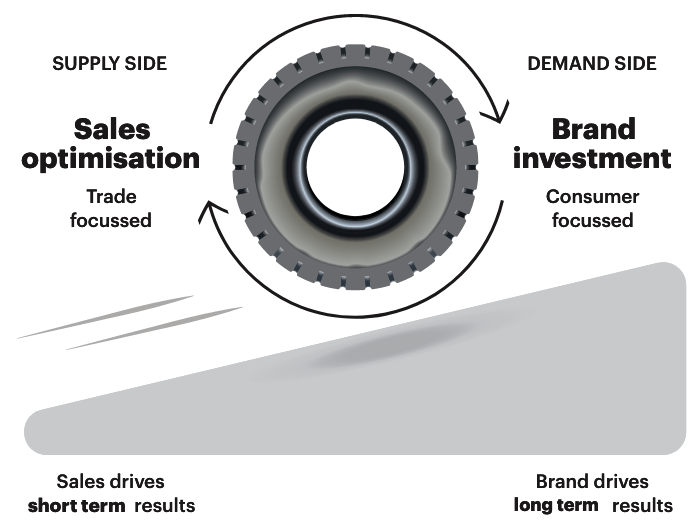The State of Ag Marketing – It’s Time to Fix the Fences
September 2022

Within an industry that endlessly pursues small gains in performance, the ag marketing landscape too often leaves value, revenue and prospective customers on the table. Here’s our guide to fixing the marketing fences and setting yourself up for success.
The state of ag-marketing, particularly at a producer level, is obsessed with identifying and making the most of every small potential gain. Ag products compete over slight but provable gains when it comes to soil quality, pasture growth, animal health, reliability and yield all in the name of driving small incremental improvements in productivity and more recently, sustainability. Farmers, farm managers and consultants all pride themselves in leaving no stone unturned in their pursuit for optimal performance.
But among this endless pursuit of the ultimate in peak performance, the ag marketing landscape is too often leaving value, revenue and prospective customers on the table. Or, to stretch the metaphor to breaking point, ag marketers are leaving their fences un-mended.
A lack of marketing investment
We all know that marketing has been through one hell of a transformation over the the past decade. Driven predominantly by the uncapped potential of emerging martech, data is now the lifeblood of marketing, and customer insight the heartbeat.
Ag marketing has been slow to adapt. Not at the top tier corporate level – the Silver Fern Farms, Zespris and Fonterras of the world have of course invested in marketing capability at scale, building impressive martech stacks alongside data and analytics and design capabilities to deliver superior customer experiences, fuelled by a deep and meaningful knowledge of their key customer segments.
However dig beneath those industry-leading businesses and there appears to be a general lack of marketing investment in the ag sector. This is despite a prevailing and often repeated view at the recent PINZ summit that the best thing the New Zealand ag sector can do right now is concentrate on “telling its story better.”
Balancing short and long term success
Ag businesses are generally very sales-led in their approach to growth, choosing to invest in sales initiatives and frontline sales staff to engage with distributors and retailers with the aim of generating short-term supply-side peaks. As we all know from Byron Sharp’s work, this is a race to the bottom. Those peaks are often generated through profit-gouging promotions, and they do little to build long-term equity. It’s a pay to play strategy which delivers diminishing returns over time.
For ag businesses to succeed in the long term, they need to re-balance their investment between the current sales-led supply-side initiatives and strategic marketing focused on demand-side growth.
That’s what we’re focusing on for our clients at Tracta. By balancing investment between short-term sales (which generates movement of stock and cashflow) and long-term demand building at a consumer level (which generates brand equity and customer growth), we’re giving our clients the chance to escape the race to the bottom and instead build sustainable long term value.

Tracta’s approach balances short term sales initiatives with long term brand building
that all starts with fixing the fences. It’s impossible to deliver optimal performance without first putting the foundations in place. That’s why we start with a three step process:
- Market identification – I’ll write more about this in future posts, but the idea that a farmer is a farmer is a farmer, is just simply misguided. At Tracta we talk to farmers on a daily basis, and they have the same diversity of needs, motivations, ideals, beliefs, values as any other part of the population. So “Farmers” is not a target audience or a customer segment, any more than “Shoppers” is in FMCG. In order to implement strategic marketing that drives genuine demand, ag businesses have to know who it is they’re going after. That means understanding and empathising with segments and personas just as in any other sector.
- Value definition – if you don’t know what value you deliver to your target customers, on a functional and emotional level, and how that is differentiated from your competitor set, you aren’t in a position to go-to-market. Defining your value proposition gives you something to hold yourself accountable to. That value has to be delivered consistently and across all touch-points. At Tracta we use a touchpoint map to define how each touchpoint plays a part in delivering the value proposition. Customers don’t distinguish between channels – their perception of your value and your brand is built up through the sum of all the interactions they have with you. And unfortunately they’ll remember the one that let them down.
- Martech infrastructure – here’s the scary bit. Only it’s really not. Martech is a cluttered landscape of thousands of platforms all making bold claims in terms of what they can do for you. To the un-initiated it can be hard to navigate and from what we’ve seen, that means it often ends up in the too hard basket. But with some guidance, building a simple martech architecture that powers data-targeted, omnichannel marketing really isn’t that hard. We’ve done it for dozens of our clients using a small selection of platforms that all integrate with each other, and require little ongoing maintenance. These platforms become the foundations for future optimisation, so it’s critical to get it right.
Aotearoa needs a thriving and sustainable ag sector. There are enormous challenges facing the sector – climate change, carbon taxes, trade partners, water insecurity etc… – that are going to be tough to navigate at times, and hard to overcome. But the truth of it is that the marketing challenges the ag sector is facing are very surmountable. It just takes a little glance sideways to other industries to see that it can be done, and that doing it delivers huge gains for those who move first.
So who’s ready to fix the fences?




